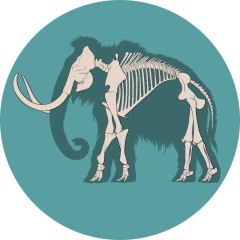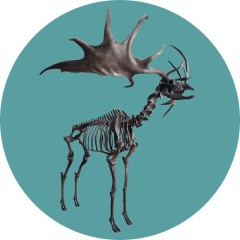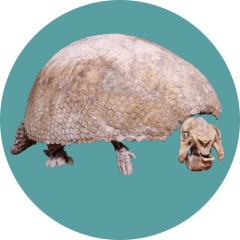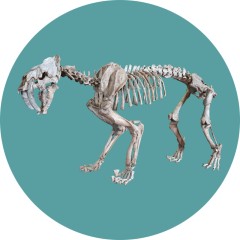
© NHM Vienna, C. Potter
The Ice Age has been going on for 2.6 million years. Since then, both polar regions of the Earth – the Arctic and the Antarctic
– have been covered by ice. However, even during an ice age, it is not always equally cold. During the warmer periods, Central
Europe was forested and rhinos were to be found in the hills around Vienna. During the colder periods, mammoths populated
the dry, treeless landscape. The Alps were covered with a thick sheet of ice, but there were no glaciers in what is now Vienna.
Traces of the glaciers of the last cold period of the current Ice Age can still be seen in the mountains and in the Alpine foothills. This allows us to understand how the glaciers grew and shrank.
Today we are living in a warm period of the current Ice Age.
During the coldest phases of the Ice Age (24,000 years ago), it was not only Europe that looked very different from today. In South America, dry savannahs expanded where dense rainforests grow today. Sabre-toothed cats, giant armadillos, giant sloths, and the ancestors of today's llamas lived there. As in Europe, many of these giants disappeared at the end of the last glacial period. We don't know exactly why. Both climate change and humans probably contributed to their extinction.
Traces of the glaciers of the last cold period of the current Ice Age can still be seen in the mountains and in the Alpine foothills. This allows us to understand how the glaciers grew and shrank.
Today we are living in a warm period of the current Ice Age.
During the coldest phases of the Ice Age (24,000 years ago), it was not only Europe that looked very different from today. In South America, dry savannahs expanded where dense rainforests grow today. Sabre-toothed cats, giant armadillos, giant sloths, and the ancestors of today's llamas lived there. As in Europe, many of these giants disappeared at the end of the last glacial period. We don't know exactly why. Both climate change and humans probably contributed to their extinction.


Woolly mammoth
Woolly mammoths could weigh up to six tons. They had to eat up to 180 kilograms every day to maintain their weight. The mammoth
steppe was like a richly laid table for them. From deep-frozen dung heaps, we know that they ate a wide variety of mosses,
grasses, flowers, shrubs, and even parts of trees.
Giant deer
At two meters in shoulder height, the giant deer was one of the largest animals in the ice age steppes of Europe. Its antlers were up to 3.6 meters wide and could weigh 50 kilograms. It is the largest set of antlers that any animal has ever borne.


Giant armadillo
This is not a tortoise, but a giant armadillo. Its shell made of bony plates served as protection, while the tail was used to defend itself. Giant armadillos lived in the savannahs of South America and could grow up to three meters in length. They became extinct just 10,000 years ago.
Saber-toothed cat
Saber-toothed cats lived in the forests and grasslands of America. They hunted bison, camels, and giant armadillos in packs. Their ‘saber teeth’ were used to inflict fatal wounds on their prey. However, these teeth were too thin and fragile to bite through bones.


